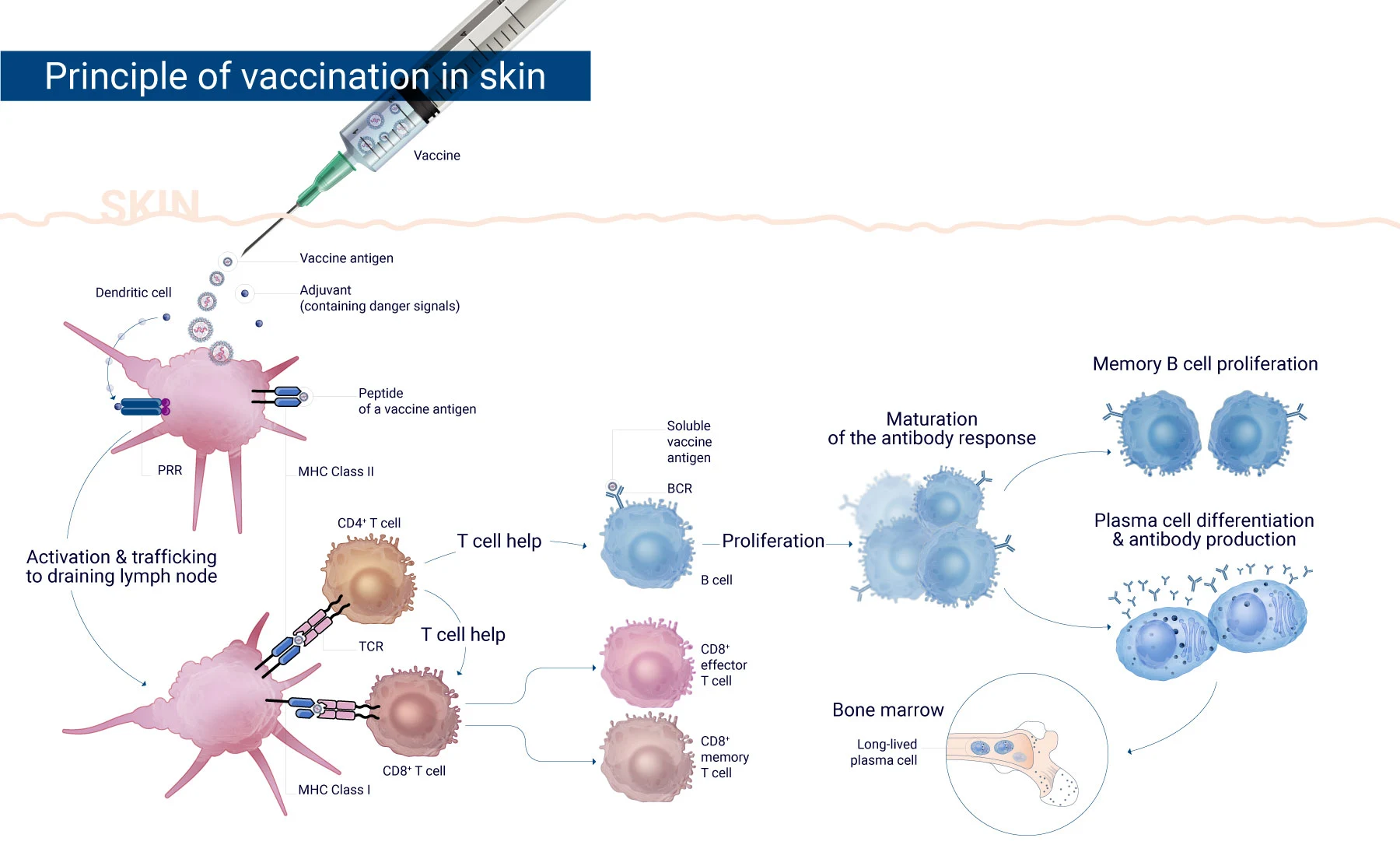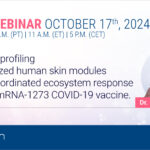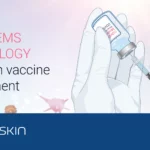Immunogenicity Series
Part 2 – Wanted Immunogenicity for Vaccine Development
Immunogenicity is a key concept in vaccine development,
referring to the ability of a vaccine to stimulate an immune response in the recipient.
It is a desirable and critical characteristic because the effectiveness of a vaccine is directly linked to its ability to induce a robust and protective immune response.
Vaccine Development: Global Health Impact
Since the 1960s, when national immunization programs were first meticulously organized, vaccines have revolutionized public health. In nations where vaccine coverage is widespread, the diseases that once were responsible for the majority of childhood deaths have now all but vanished. This monumental shift underscores the critical role vaccines play in safeguarding communities and shaping a healthier future for generations to come.
Vaccines harness the power of the human immune system, enabling it to recognize, respond to, and remember encounters with pathogens. Yet, intriguingly, for a significant portion of history, the development of vaccines proceeded through empirical research, often without the direct involvement of immunologists.
What are vaccines?
A vaccine is a biological drug, crafted to safely trigger an immune response that arms the body with protection against future encounters with a pathogen. To achieve this, vaccines contain antigens, either sourced directly from the pathogen or synthesized to mimic its components. One or more protein antigens act as the key players in stimulating immune responses that fortify the immune system against the infection or disease.
The efficacy of vaccines is rigorously evaluated through clinical trials, which link immune responses elicited by the vaccine antigen to specific clinical outcomes—ranging from infection prevention and diminished disease severity to reduced hospitalization rates. Identifying an immune response that reliably predicts protection can significantly accelerate the development and dissemination of novel vaccines.
Vaccines are broadly categorized into live and non-live (often referred to as ‘inactivated’) types. This distinction separates vaccines containing attenuated, replicating strains of the pathogen from those comprising solely pathogen components or inactivated whole organisms. Beyond these ‘traditional’ classifications, recent decades have seen the emergence of advanced platforms, including viral vectors, nucleic acid-based RNA and DNA vaccines, and virus-like particles. These innovations represent the cutting edge of vaccine technology, offering new pathways for immunological defense strategies.
Mechanism of immunization through vaccines
The immunization process involves several key steps that ultimately result in the development of immunological memory, enabling the immune system to respond more effectively upon subsequent encounter with the actual pathogen.

Upon vaccine administration, the protein antigen is processed by antigen-presenting cells (APCs) such as dendritic cells, macrophages, or B cells. These APCs, upon activation by adjuvant-contained danger signals through pattern recognition receptors (PRRs), migrate to the draining lymph nodes. This is where the APCs, presenting vaccine protein peptides via MHC molecules, activate T cells through their T cell receptors (TCR).
This activation, in concert with B cell receptor (BCR) signaling, drives B cell development within the lymph node. This T cell-dependent process induces the maturation of the antibody response, enhancing antibody affinity and diversifying antibody isotypes. The production of short-lived plasma cells, secreting antibodies specific to the vaccine protein, leads to a rapid rise in serum antibody levels within two weeks following the vaccination.
Concurrently, memory B cells are generated, laying the groundwork for immunological memory. Long-lived plasma cells travel to reside in bone marrow niches and can continue antibody production for decades. If the individual is later exposed to the actual pathogen, memory B cells can quickly mount a strong and targeted immune response, to neutralize the pathogen.
T cells are pivotal in this immune response to pathogens. CD8+ memory T cells stand ready to proliferate upon pathogen detection, aiding B cells in antibody production, while CD8+ effector T cells play a critical role in eliminating infected cells.
Vaccines, by sparking these immune responses, adeptly “train” the immune system to identify and eradicate specific pathogens, offering a shield against future infections and diminishing disease severity. All routinely used vaccines, except Mycobacterium bovis bacillus Calmette–Guérin (BCG), which is understood to trigger T cell responses that avert severe disease and innate immune mechanisms potentially blocking infection, are believed to primarily offer protection via antibody production. Advancing immunological knowledge continues to shed light on the protective mechanisms vaccines activate, underscoring the intricate interplay at the heart of vaccine-mediated immunity.
Why is it important to understand vaccine immunogenicity?
Live vaccines are designed to strike a balance in immunocompetent hosts: they replicate just enough to elicit a robust immune response without causing significant disease symptoms. This approach is exemplified by vaccines against measles, mumps, rubella, rotavirus, oral polio, the BCG vaccine for tuberculosis, and the live attenuated influenza vaccine. The challenge lies in achieving sufficient replication of the vaccine pathogen to provoke a strong immune defense while ensuring the pathogen is attenuated enough to prevent symptomatic disease. Consequently, some live attenuated vaccines, such as the Ty21a typhoid vaccine, necessitate multiple doses to maintain immunity, which may be relatively short-lived. Moreover, certain live attenuated vaccines can induce mild disease manifestations; for instance, approximately 5% of children may develop a rash and up to 15% may experience fever following measles vaccination. This nuanced trade-off underscores the complexity of developing live vaccines that are both effective and safe.
On the other hand, non-live vaccines are often combined with an adjuvant to improve their immunogenicity.
Immunogenicity plays a crucial role in various aspects of vaccine development:
- Long-lasting Immunity: A highly immunogenic vaccine is more likely to induce long-lasting immunity. The immune system’s memory cells “remember” the pathogen, enabling a faster and more effective response upon subsequent exposure. This durability is essential for vaccines to provide sustained protection over an extended period.
- Herd Immunity: Immunogenic vaccines contribute to the establishment of herd immunity within a population. When a significant portion of the population is immune to a particular pathogen, it reduces the overall transmission of the disease. This is particularly important for protecting vulnerable individuals who may not be able to receive vaccines, such as those with certain medical conditions or allergies.
- Reduced Disease Transmission: Highly immunogenic vaccines can reduce the transmission of infectious agents within communities. By preventing infection in vaccinated individuals, the spread of the pathogen is curtailed, contributing to the overall control and potential eradication of the disease.
- Vaccine Efficacy: The efficacy of a vaccine is directly related to its immunogenicity. A more immunogenic vaccine is likely to have higher efficacy, meaning it provides better protection against the targeted disease. This is a critical factor in assessing the overall success of a vaccine in preventing illness.
To enhance immunogenicity, vaccine developers may use adjuvants, which are substances added to vaccines to boost the immune response, or they may employ advanced vaccine technologies to mimic the natural infection process more closely. Overall, the ability of a vaccine to elicit a strong and effective immune response is central to its success in preventing and controlling infectious diseases.
References
From Pollard, A. J., & Bijker, E. M. (2021). A guide to vaccinology: From basic principles to new developments. Nature Reviews Immunology, 21(2), 83-100.
Comments are closed.



